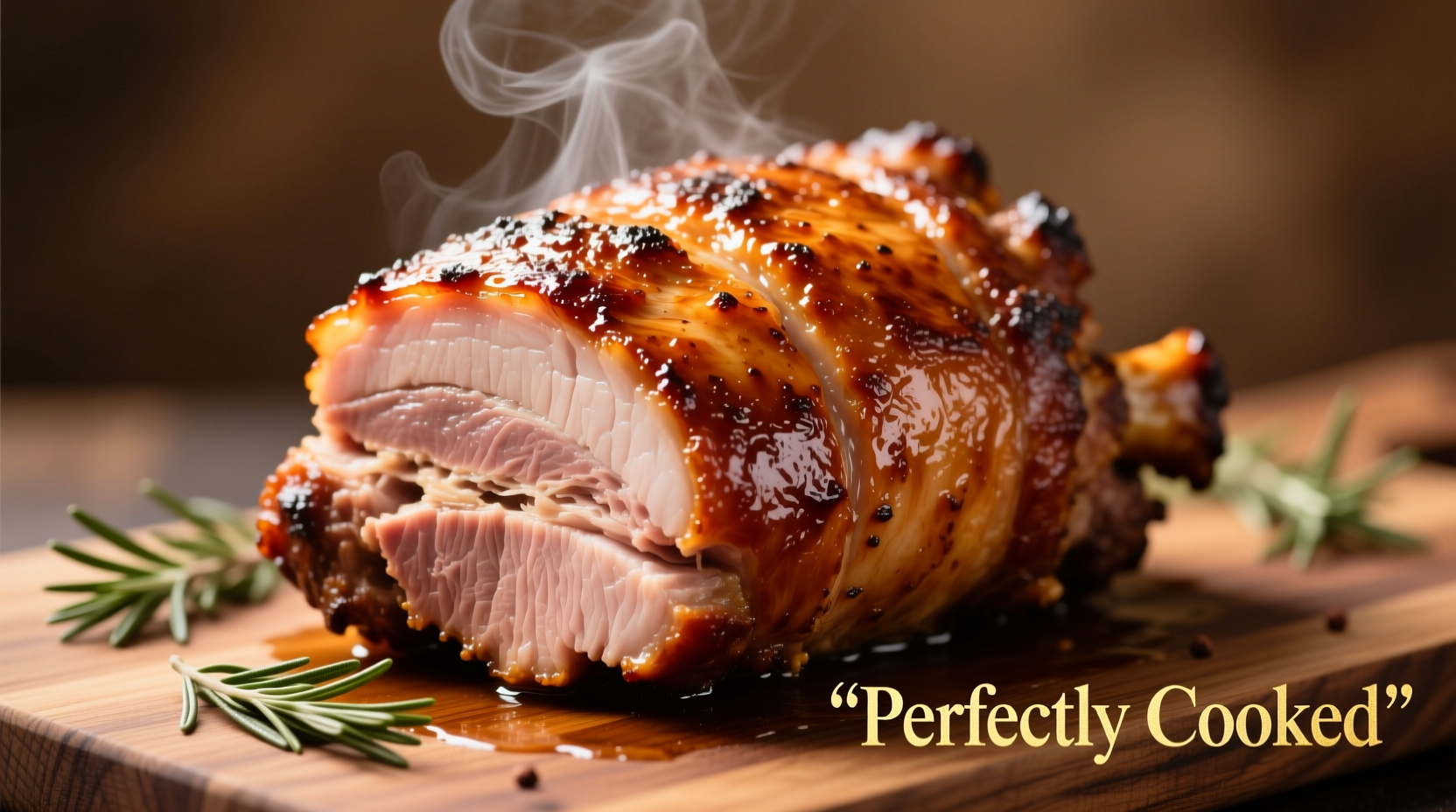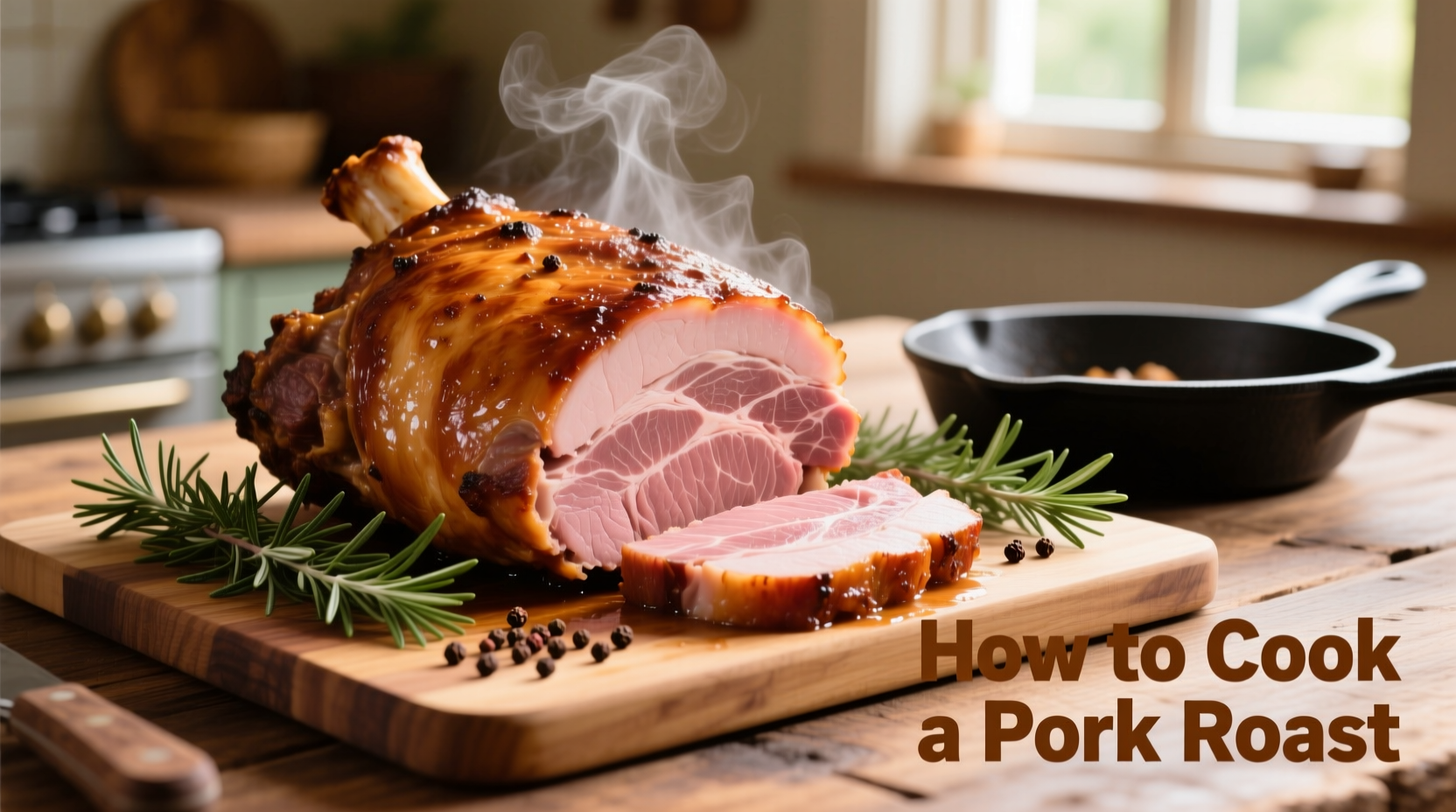For perfectly cooked pork roast, sear at 450°F for 15 minutes, then roast at 325°F until internal temperature reaches 145°F (measured in thickest part), followed by a 15-minute rest. This method ensures juicy, flavorful meat with a golden crust every time.
Master the art of cooking pork roast with this comprehensive guide designed for home chefs. Whether you're preparing a Sunday dinner or special occasion meal, you'll learn professional techniques for achieving tender, juicy results with a perfect golden crust. This guide covers everything from selecting the right cut to carving your masterpiece, complete with temperature charts, timing calculations, and chef-approved flavor enhancements.
Your Complete Roadmap to Perfect Pork Roast
Cooking pork roast successfully involves understanding the entire process from grocery store to serving platter. Follow this behavior-based roadmap to transform your cooking experience:
1. Planning Your Perfect Pork Roast (Before You Shop)
Selecting the right cut determines your success before you even begin cooking. The USDA Meat and Poultry Hotline confirms that pork loin roast (boneless or bone-in) works best for traditional oven roasting, offering the ideal balance of lean meat and marbling.
Consider these key planning factors:
- Cut selection: Bone-in roasts provide better flavor distribution but require 10-15% longer cooking time
- Weight calculation: Plan for 1/2 pound per person (cooked weight)
- Equipment checklist: Instant-read thermometer (essential), roasting pan with rack, meat thermometer
- Time investment: Allow 20-25 minutes per pound plus resting time
2. Preparation Phase: Setting Up for Success
Proper preparation transforms ordinary pork into extraordinary meals. According to culinary research from the American Culinary Federation, proper seasoning penetration occurs when salt is applied 24 hours before cooking.
Follow these preparation steps:
- Dry the surface: Pat roast completely dry with paper towels (critical for browning)
- Seasoning strategy: Apply 1 teaspoon kosher salt per pound 24 hours before cooking, then add herbs and pepper just before roasting
- Temperature equalization: Remove roast from refrigerator 1 hour before cooking to reduce temperature shock
- Optional enhancements: Create small pockets for garlic slivers or herb bundles
| Flavor Profile | Seasoning Blend | Best With |
|---|---|---|
| Classic Herb | Rosemary, thyme, garlic, olive oil | All pork cuts |
| Apple Spice | Cinnamon, allspice, apple cider vinegar | Loins and tenderloins |
| Smoky Paprika | Paprika, cumin, brown sugar | Shoulder roasts |
3. Cooking Process: The Temperature Timeline
Understanding the cooking timeline prevents common mistakes that lead to dry pork. The USDA Food Safety and Inspection Service updated pork cooking guidelines in 2011, lowering the recommended internal temperature from 160°F to 145°F with a 3-minute rest period.
Follow this precise cooking method:
- Initial sear: Preheat oven to 450°F, roast uncovered for 15 minutes to develop crust
- Temperature adjustment: Reduce heat to 325°F without opening oven door
- Monitoring: Insert thermometer into thickest part (avoiding bone), check temperature starting at 20 minutes per pound
- Doneness target: Remove at 140°F (temperature will rise to 145°F during rest)

4. The Critical Resting Phase: Why Patience Pays
Skipping the resting period causes up to 40% moisture loss according to research published in the Journal of Food Science. During resting, residual heat continues cooking while proteins relax, redistributing juices throughout the meat.
Master the resting process:
- Cover loosely with foil (prevents over-browning while retaining heat)
- Rest for 15 minutes per pound (minimum 15 minutes)
- Place on cutting board with groove to capture juices for gravy
- Temperature will rise 5-10°F during rest (carryover cooking)
5. Serving and Carving: The Final Presentation
Professional carving technique affects both presentation and texture. The American Institute of Baking recommends slicing against the grain at 1/4 to 1/2 inch thickness for maximum tenderness.
Perfect your serving approach:
- Identify the grain direction by looking for parallel muscle fibers
- Position knife perpendicular to grain for slicing
- Use a long, sharp carving knife with smooth slicing motion
- Collect pan juices for simple au jus (simmer with broth and herbs)
Avoid These 3 Common Pork Roast Mistakes
Even experienced cooks make these critical errors that compromise results:
- Overcooking: Cooking beyond 145°F internal temperature causes rapid moisture loss (pork continues cooking during rest)
- Skipping the sear: Without initial high-heat exposure, you miss the Maillard reaction that creates complex flavors
- Cutting too soon: Slicing before proper resting releases precious juices onto the cutting board
Temperature Reference Guide
Use this chart as your cooking roadmap. Always verify with an instant-read thermometer for accuracy.
| Roast Weight | Approximate Cooking Time | Target Internal Temp | Resting Time |
|---|---|---|---|
| 2-3 pounds | 50-75 minutes | 140°F (remove) | 15 minutes |
| 3-4 pounds | 75-100 minutes | 140°F (remove) | 20 minutes |
| 4-5 pounds | 100-125 minutes | 140°F (remove) | 25 minutes |
Remember that oven temperatures vary, so always rely on internal meat temperature rather than time alone. The National Pork Board confirms that properly cooked pork may retain a slight pink hue near the bone - this doesn't indicate undercooking when temperature guidelines are followed.
Perfect Pairings for Your Pork Roast
Complete your meal with these chef-recommended accompaniments that complement pork's natural sweetness:
- Classic: Applesauce, roasted potatoes, and green beans
- Elegant: Fennel and orange salad with roasted root vegetables
- Weeknight: Quick apple and onion pan sauce with mashed potatoes
For wine pairings, medium-bodied reds like Pinot Noir or fruit-forward whites like Riesling enhance pork's flavor profile without overpowering it.











 浙公网安备
33010002000092号
浙公网安备
33010002000092号 浙B2-20120091-4
浙B2-20120091-4